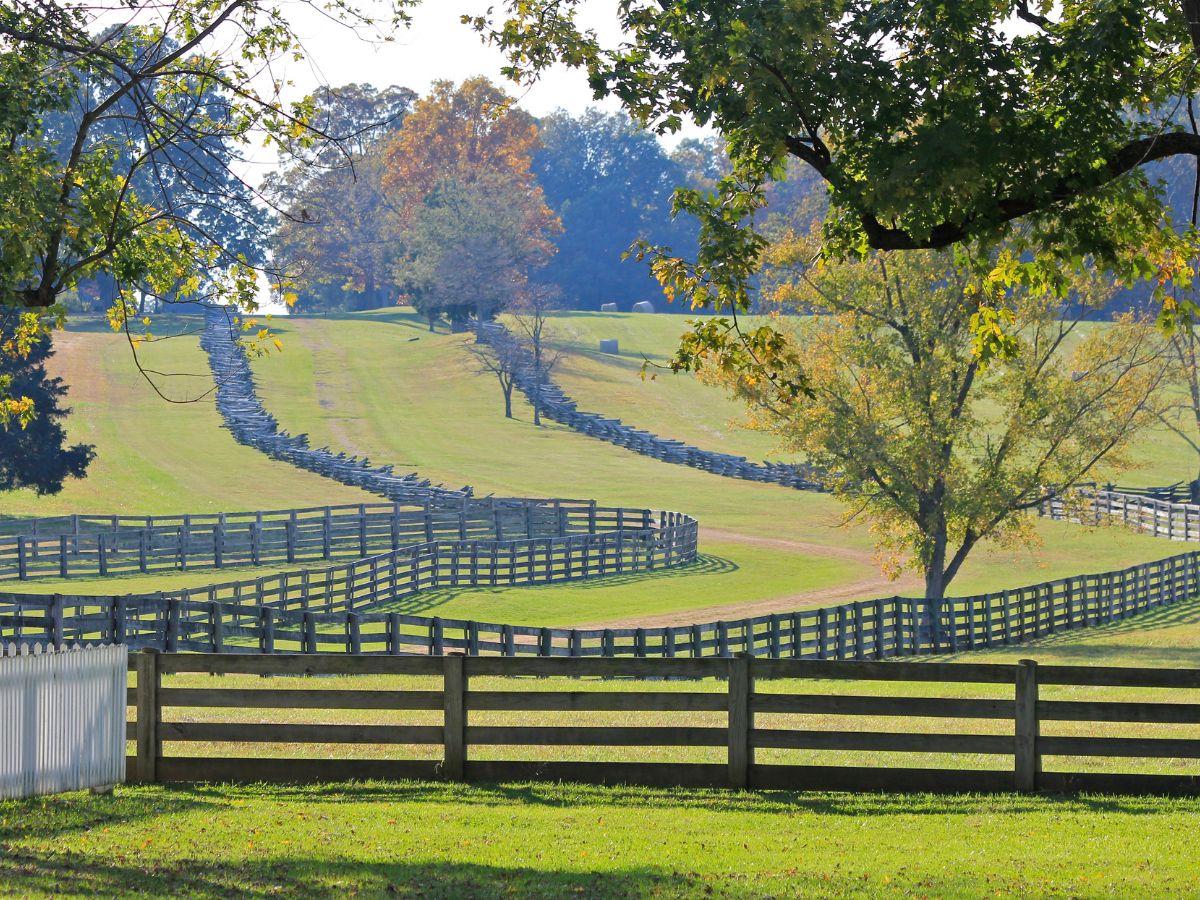
A split rail fence is a timeless, rustic fencing option that adds charm to any property. To mark property lines, keep animals in, or improve your yard, a rail fence is a cheap and attractive choice.
The good news? You don’t have to break the bank to install one. In this guide, we will look at affordable split rail fence ideas. These ideas offer durability, usefulness, and beauty, all while staying within budget.
Why Choose a Split Rail Fence?
A split rail fence is a popular choice for homeowners and farmers. It is affordable, easy to install, and needs little maintenance. Here’s why it stands out:
- Cost-Effective – Uses fewer materials than other fencing types, making it an economical option.
- Easy to Install – Requires simple tools and minimal labor compared to other fence styles.
- Low Maintenance – With proper care, a split rail fence can last for decades.
- Rustic Charm – Enhances the natural beauty of your property.
Now, let’s look at the best budget-friendly split rail fence ideas to help you achieve the perfect balance between cost and durability.
1. Use Locally Sourced Wood
One of the best ways to save money on your rail fence is to source wood locally. Different regions have different wood species available at lower costs. Common choices for split rail fences include:
- Cedar – Naturally resistant to decay and pests.
- Pine – A budget-friendly option that can be treated for added durability.
- Oak – Strong and long-lasting but may cost slightly more.
Using locally sourced wood reduces transportation costs and ensures your fence blends naturally into the environment.
2. Install the Fence Yourself
Labor costs can significantly increase the overall price of your split rail fence. If you have some basic tools and DIY skills, installing the fence yourself can save you hundreds of dollars. Steps to install a split rail fence:
- Mark Your Fence Line – Use stakes and string to outline the fence layout.
- Dig Post Holes – Space them evenly to ensure proper alignment.
- Set the Fence Posts – Use gravel and concrete to secure them.
- Attach the Rails – Fit the rails into the fence posts securely.
By following these steps, you can achieve a professional-looking installation at a fraction of the cost.
3. Choose Two-Rail Instead of Three-Rail Fencing
A split rail fence typically comes in two-rail, three-rail, or four-rail designs. If you’re on a tight budget, opting for a two-rail fence can significantly cut down on material costs while still maintaining functionality.
- Best for property boundaries and decorative fencing.
- Uses fewer materials, making it more cost-effective.
For areas where livestock containment is essential, consider adding wire mesh to a two-rail fence instead of upgrading to a three-rail option.
4. Use Pressure-Treated Wood for Longevity
A rail fence made from pressure-treated wood is more resistant to moisture, pests, and rot. Though slightly more expensive than untreated wood, it lasts much longer, reducing the need for frequent repairs and replacements.
Benefits of treated wood:
- Resists decay and insect damage.
- Withstands harsh weather conditions.
- Extends the lifespan of the fence.
Investing in pressure-treated wood upfront can save you more in the long run by reducing maintenance costs.
5. Space Out the Fence Posts
Placing fence posts closer together improves stability, but it also increases material costs. To cut down expenses, space the posts a little farther apart—without compromising structural integrity.
- Standard spacing: 8–10 feet apart.
- Cost-saving option: 10–12 feet apart (works best in non-livestock areas).
Proper spacing ensures you use fewer fence posts, reducing overall material costs.
6. Consider Reclaimed or Recycled Materials
Reclaimed wood and recycled materials can be an eco-friendly and budget-friendly choice for your split rail fence. Many lumber yards and salvage stores offer high-quality reclaimed wood at lower prices than new materials.
Where to find reclaimed materials:
- Local salvage yards.
- Online marketplaces.
- Construction sites (with permission).
Using repurposed materials not only saves money but also gives your fence a unique, rustic appeal.
7. Enhance with Wire Mesh for Extra Security
If you need additional security for smaller animals or want to protect crops, attaching wire mesh to your split rail fence is an affordable alternative to upgrading to a more expensive fencing type.
- Ideal for farms, gardens, and pet enclosures.
- The cost-effective way to prevent animals from escaping.
- Easier to install than solid fencing.
Using wire mesh ensures functionality while keeping costs low.
8. Use Alternative Materials Like Vinyl
While traditional wood is the most common material for split rail fences, vinyl offers a low-maintenance alternative that can be cost-effective in the long run.
Pros of vinyl split rail fencing:
- Requires little to no maintenance.
- Resistant to rot, insects, and weather damage.
- Long-lasting, reducing replacement costs.
Though the initial cost may be higher, vinyl can be a smart investment due to its durability and minimal upkeep.
9. Maintain Your Fence to Avoid Costly Repairs
A well-maintained split rail fence lasts longer, saving you money on replacements. Simple maintenance tips include:
- Check for loose rails or damaged posts regularly.
- Apply a wood sealant to prevent moisture damage.
- Clear vegetation around the fence to avoid wood rot.
- Re-stain or repaint every few years to protect against the elements.
Preventative care ensures your fence remains sturdy and visually appealing without frequent expensive repairs.
Final Thoughts
Installing a budget-friendly split rail fence is possible with smart planning and material choices. You can choose local wood, do it yourself, or use other materials. These money-saving tips help you get the best value for your investment.
Looking for durable and affordable fencing solutions? Perimtectx offers high-quality materials and expert guidance to help you build the perfect split rail fence for your property. Visit Perimtectx to explore cost-effective options today!
